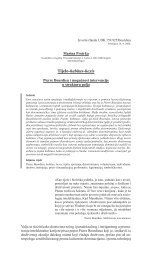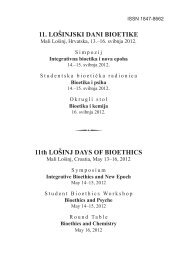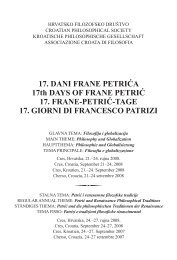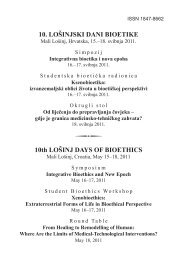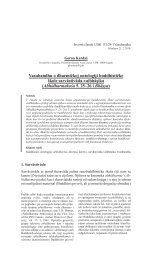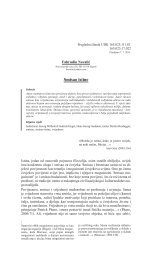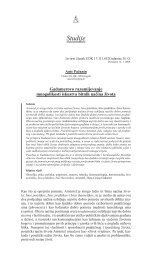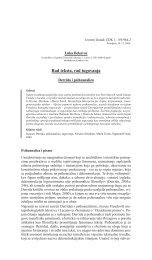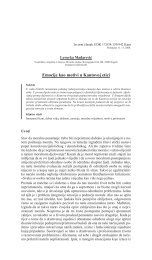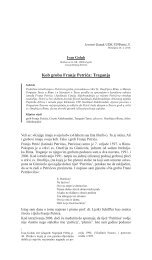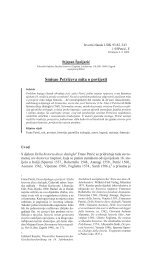Programska knjižica - Hrvatsko filozofsko društvo
Programska knjižica - Hrvatsko filozofsko društvo
Programska knjižica - Hrvatsko filozofsko društvo
You also want an ePaper? Increase the reach of your titles
YUMPU automatically turns print PDFs into web optimized ePapers that Google loves.
Once a professor is in post, he or she can apply when the grading is being reconsidered,<br />
once every two or three years. In theory, grades are then awarded<br />
by “objective” criteria, in accordance with the principle of “transparency”; the<br />
level of excellence required in order to be classified at each grade is expressed<br />
in an official formula. In practice, however, there is a predetermined sum of<br />
money available for distribution, so that promotion cannot but be competitive.<br />
The whole process of application and award is confidential, so the system is<br />
only relatively “transparent”, and seems to me to be an unsatisfactory hybrid<br />
between our old, now forbidden, system and true competition.<br />
The Research Assessment Exercise (RAE) is nominally just that, an assessment<br />
of how good university departments have been over the past few<br />
years at producing research. But it also contains an element of competition.<br />
Let me describe the system as it operated in 1996, when I was an assessor for<br />
the second time.<br />
Individual researchers are assessed at one of five grades, from A to E.<br />
Their departments, which submit their names and publications, are assessed at<br />
one of six grades: the top is 5*, the rest go down from 5 to 1. A complicated<br />
formula is prescribed to the assessors for converting a department’s set of individual<br />
grades into a single joint grade. The individual grades remain secret;<br />
the joint grades are published and determine the department’s level of research<br />
funding until the next RAE.<br />
How is this calculated? The HEFCE assigns a sum of money to each joint<br />
grade from 5* to 1. Let us call these unknown figures u, v, w, x, y and z. (I suspect<br />
that z has a value of zero.) The values of these figures are not announced<br />
until the assessment is complete, nor is the total sum of money available for<br />
distribution. The money awarded to the department is then the value corresponding<br />
to its joint grade multiplied by the number of names submitted.<br />
Let me give an example. Prof. P. heads a department of 9 academic staff,<br />
5 of whom he knows to publish good research, even though he cannot be sure<br />
how good the assessors will think it. Another 2 of the staff have published<br />
nothing worth mentioning, so he is disinclined to submit their names at all.<br />
There are however also two who have published research in the relevant period<br />
but he finds their work undistinguished. If he submits their names, his department<br />
will probably get a lower joint grade than if he left them out. He guesses<br />
that without them his department will get a 5 and so be at level v; with them,<br />
he expects a 4 and level w. So if their names do not go forward he expects to<br />
get v x 5 pounds, with them w x 7 pounds. The trouble is that he has no idea of<br />
the values of v and w, so even if he is clever (and lucky) enough to predict the<br />
ranking correctly, he cannot calculate his better tactic, but has to guess. In the<br />
end it might even turn out, to his frustration, that he should have submitted all<br />
218



